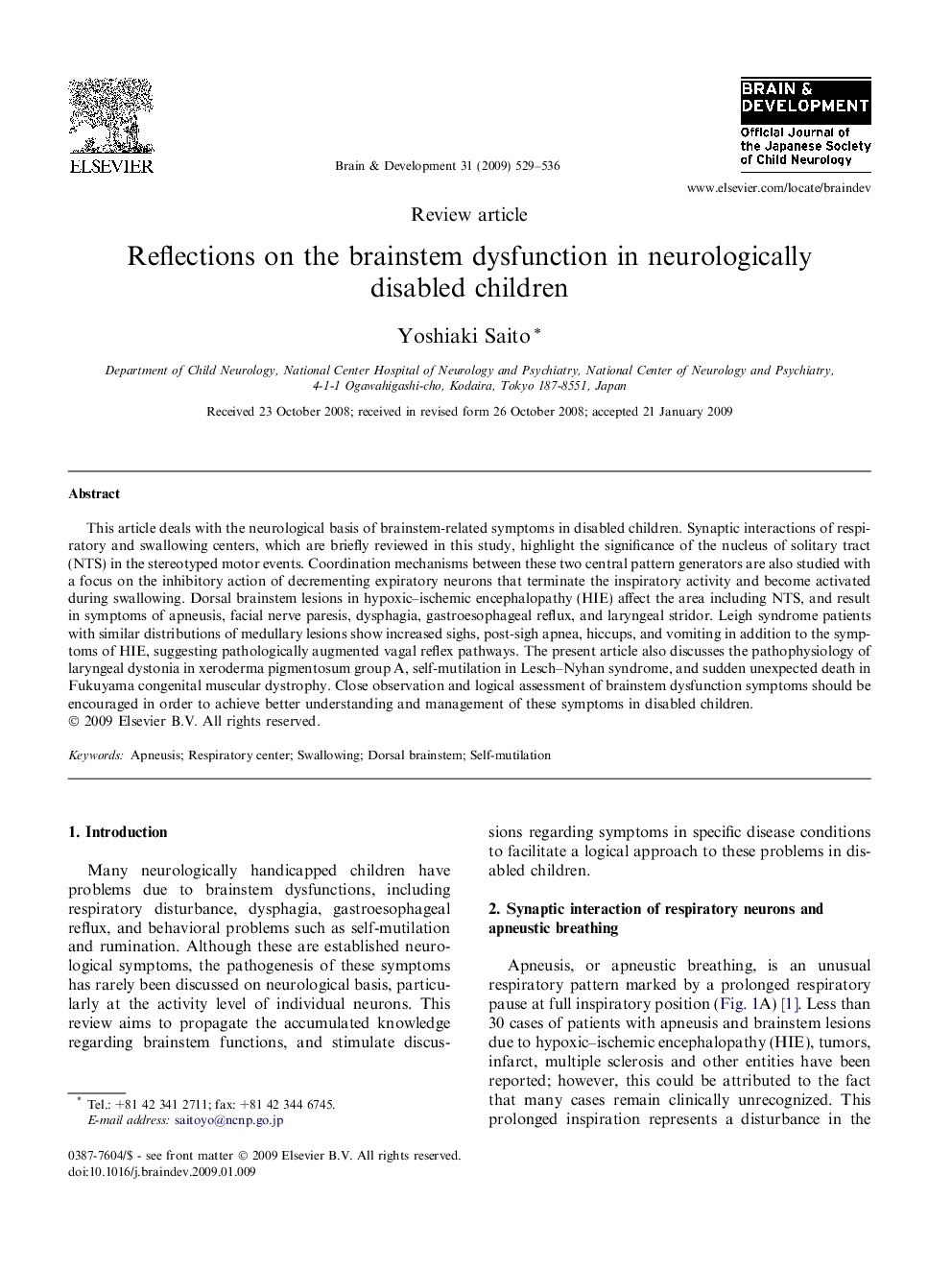| Article ID | Journal | Published Year | Pages | File Type |
|---|---|---|---|---|
| 3037864 | Brain and Development | 2009 | 8 Pages |
This article deals with the neurological basis of brainstem-related symptoms in disabled children. Synaptic interactions of respiratory and swallowing centers, which are briefly reviewed in this study, highlight the significance of the nucleus of solitary tract (NTS) in the stereotyped motor events. Coordination mechanisms between these two central pattern generators are also studied with a focus on the inhibitory action of decrementing expiratory neurons that terminate the inspiratory activity and become activated during swallowing. Dorsal brainstem lesions in hypoxic–ischemic encephalopathy (HIE) affect the area including NTS, and result in symptoms of apneusis, facial nerve paresis, dysphagia, gastroesophageal reflux, and laryngeal stridor. Leigh syndrome patients with similar distributions of medullary lesions show increased sighs, post-sigh apnea, hiccups, and vomiting in addition to the symptoms of HIE, suggesting pathologically augmented vagal reflex pathways. The present article also discusses the pathophysiology of laryngeal dystonia in xeroderma pigmentosum group A, self-mutilation in Lesch–Nyhan syndrome, and sudden unexpected death in Fukuyama congenital muscular dystrophy. Close observation and logical assessment of brainstem dysfunction symptoms should be encouraged in order to achieve better understanding and management of these symptoms in disabled children.
